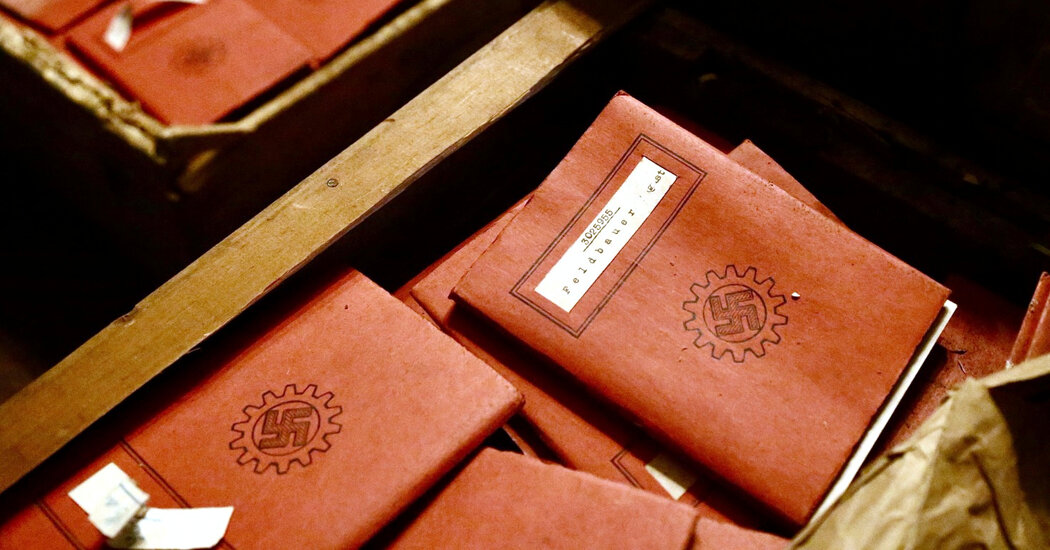Workers clearing out the basement of Argentina’s Supreme Court made a startling discovery recently. They found boxes filled with swastika-stamped notebooks, propaganda material and other Nazi-era documents.
The boxes had been stored there for more than eight decades, the court said, and were uncovered by accident because workers were going through archives for the creation of a Supreme Court Museum.
Upon opening the boxes, they found “material intended to consolidate and propagate Adolf Hitler’s ideology in Argentina, during the height of World War II,” according to a statement from the court in Spanish.
Last week, officials, researchers and members of the Argentine Jewish community held a ceremony to open more of the boxes. The court’s president, Horacio Rosatti, ordered a full survey of the material given its historical significance and “potentially crucial information it could contain to clarify events related to the Holocaust,” the court said in its statement on Monday.
Jonathan Karszenbaum, the executive director of the Holocaust Museum in Buenos Aires, participated in the formal opening on Friday. “I was shocked because of the volume of this,” he said, adding that he had not seen the contents of all of the boxes.
The court has determined some details about the origin of the boxes. It said that the material had arrived in Argentina from the German Embassy in Tokyo on June 20, 1941, on the Japanese ship Nan-a-Maru, when Argentina was officially neutral in World War II, and Japan was allied with Hitler’s Germany.
The German diplomatic mission in Argentina at the time had designated the boxes as personal effects, the court said, hoping they would easily pass customs. But the boxes were held up by Argentine customs authorities and flagged to the country’s foreign minister, Enrique Ruiz Guiñazú, over concerns that admitting the contents could jeopardize Argentina’s neutrality, the court said.
Argentine officials opened some of the boxes in August 1941, finding propaganda material and other items from the Nazi regime. They also included thousands of red notebooks stamped with swastikas and names and addresses that appeared to belong to members of the Nazi Party living outside Germany.
German diplomats asked that the packages be returned, the court said, but a federal judge in Argentina ordered the seizure of the materials and referred the matter to the country’s Supreme Court.
That’s where the documents seem to have languished, largely forgotten, until this month.
The full significance of the documents was still becoming clear, Mr. Karszenbaum said. Researchers were planning to comb through the red notebooks in the coming weeks.
While Argentina took in thousands of Nazis and Nazi war criminals after World War II, the boxes’ journey reflects the country’s efforts to discourage the spread of Nazi ideology and membership before and during the war.
In May 1939, Argentina’s prosecuting attorney declared that the local Nazi party’s activities in Argentina constituted an “affront against Argentine sovereignty” and were “completely illicit and contrary to the Argentine Constitution.” Members of the Nazi Party in Germany were not allowed to become naturalized Argentine citizens.
Mr. Karszenbaum said he hoped that the further investigation into the contents of the boxes would provide more information about Nazi activity in Argentina during the war, as well as the answer to another pressing question: “Why this was hiding for so many years?”


